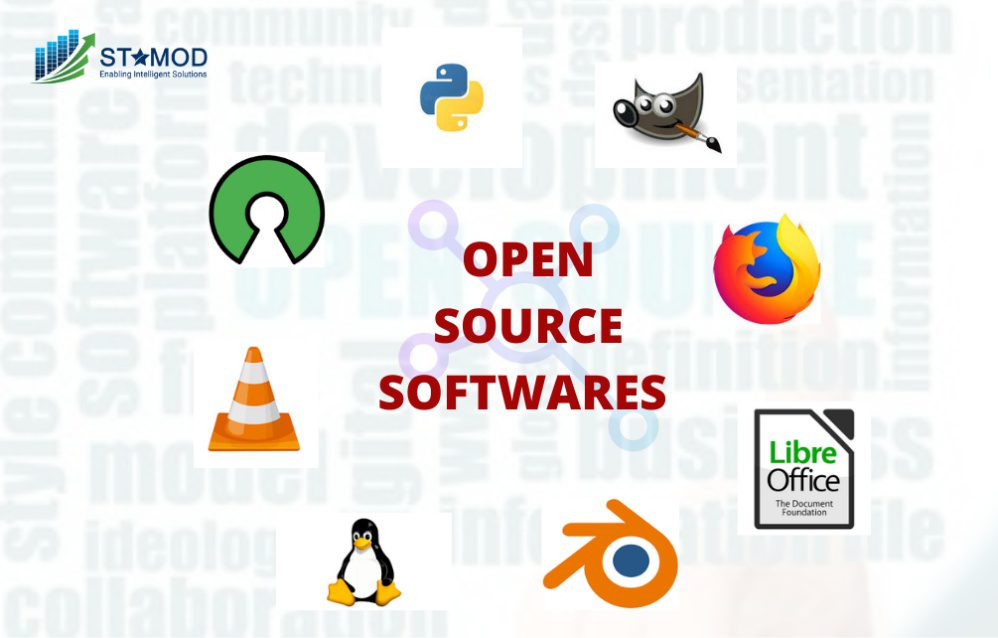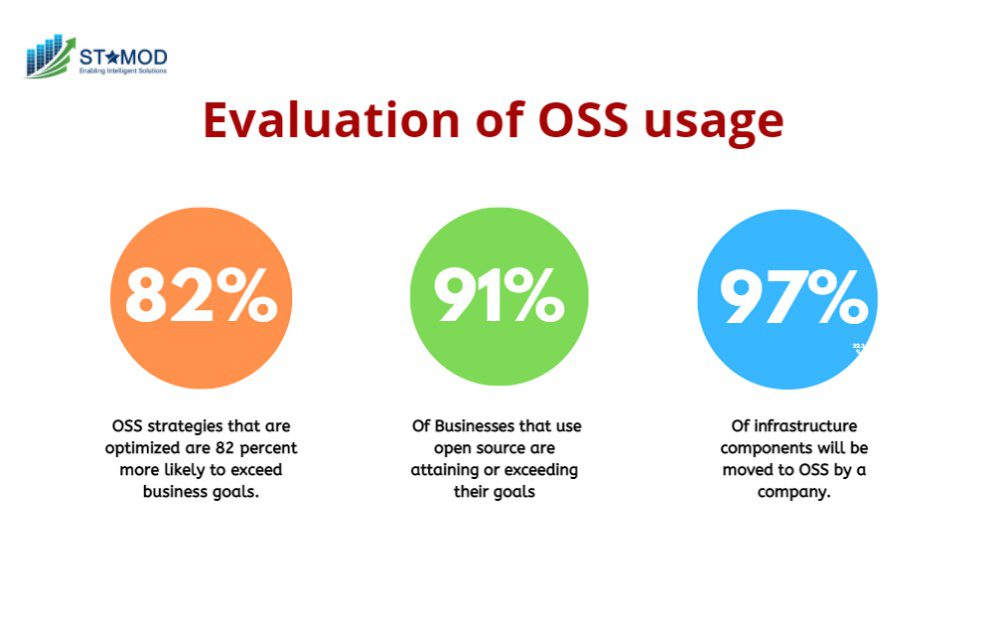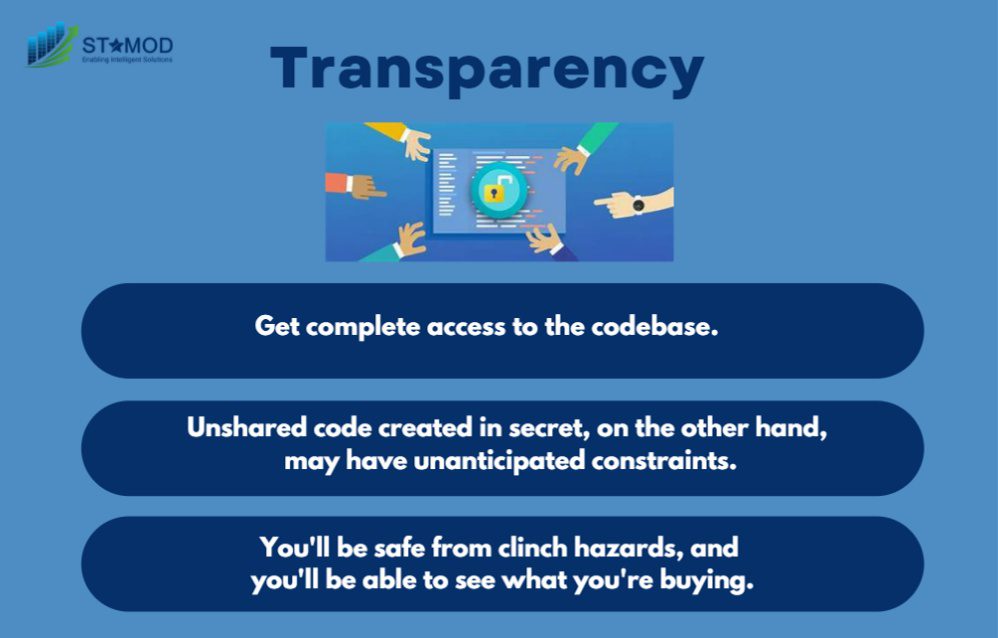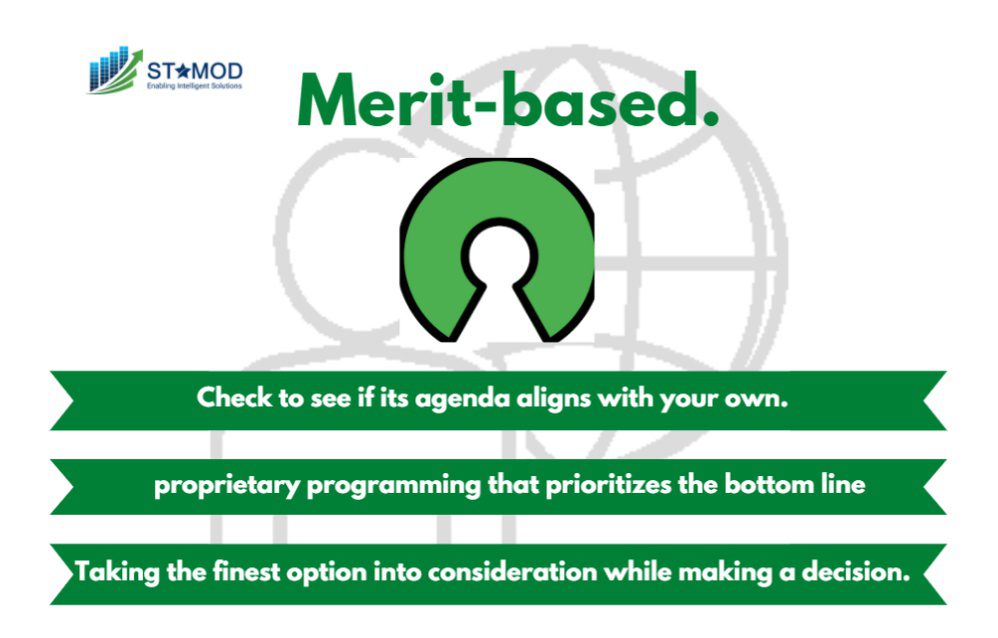
- Home
- Solutions
Engineering
Manufacturing
Intelligent Automation
Staff Augmentation
Engineering
Manufacturing
Intelligent Automation
Staff Augmentation
- Industries Covered
- Resources
- About Us
- Get in Touch


Open source software has many advantages over commercial, closed-source software, which means it’s also more secure and easier to update and maintain. This can save your business money and increase its productivity with fewer hassles.

What is open source software? Open source software refers to computer programs that you can use, modify, and redistribute according to the terms of its applicable license agreement. These licenses ensure that any code changes to the original software remain available in an accessible format to all users for free, thereby promoting transparency and collaboration between developers from different companies and organizations.
Open source software—particularly Linux—is gaining popularity as more and more people realize the benefits it has to offer. But are you familiar with the advantages that open source has over proprietary software? In this article, we’ll cover eight benefits of open source that will help your business’s bottom line, and your company culture as well.
Many great software programs are open source, which means that they’re freely available to download. Open source software is often more innovative than closed-source software because it has a much larger community of users, who can improve and offer suggestions on what features should be included in future updates. In addition, if you have a problem with your free software, chances are someone else has already encountered it or will be able to find a solution; you can benefit from their findings instead of having to start from scratch yourself.

Open source isn’t just free, it’s also transparent. With most software licenses, there are stipulations as to how you can use it and where you can share it. This often gives away rights that many would consider fundamental. For example, some licenses may require a fee for any type of commercial distribution or even limit its use to private non-commercial purposes only.
By contrast, open source software allows for unfettered usage, including all types of distribution. You can modify it to suit your needs and make whatever changes you like (as long as they don’t change the underlying structure). And you can pass along these changes without restriction or fear of copyright infringement lawsuits. When we say free, we mean free: Free doesn’t always mean gratis. While some products do come at no cost to end users (and therefore no cost to taxpayers), other products are offered at no cost but still include hidden costs.

Some companies are reluctant to use open-source software. This is because they worry that using it will make their own software vulnerable to security issues. This is misguided for two reasons: First, plenty of large companies such as IBM and Google use—and profit from—open-source software. Second, people generally modify open source software in order to fix problems rather than create them.
For example, when a computer company discovered a bug in Microsoft Windows 95 that was causing PCs to crash after 20 minutes, they went into their lab and fixed it. Then, they released a patch so that everyone else could update their systems too. Open source software means that you don’t have to rely on one company or person to keep your system up-to-date. With open source code, you can rest assured that there will always be someone looking out for your best interests by keeping an eye on things.
One major advantage to many open-source applications is that new features and updates are included for free. With proprietary software, you can be charged for upgrades or monthly fees for extra features. However, with open-source software, all development is done in public view so nothing is hidden from end-users. This helps keep costs down. If a company’s product needs updating, they’ll charge a fee to update it (and it might not even work). Open-source projects have no such issues; if there’s an issue or feature request, it will usually get addressed quickly. This is because there’s a large community of developers who want to see it succeed. And since any developer can see how an application works, anyone who has good ideas about improving something will likely have access to resources and information needed to actually make those improvements happen.
Bugs aren’t usually problems. While many companies boast about how bug free their software is on release day, open-source products often have known bugs at launch time.

At the heart of open source development is a culture based on meritocracy. The quality and usefulness of code have the most priority above all else. Everyone can see how well code is performing, so it makes sense to let others know when their contributions are up to snuff—or not. This keeps developers focused on creating high-quality applications. Applications that users want, as opposed to trying to game system for personal gain. Open-source development also encourages diversity in its ranks. With less secrecy about how things work under-the-hood, there’s an incentive for developers from different backgrounds. More often women and minorities prefer this area because they know they’ll be able to learn something new even as they contribute their skills back into a shared resource.
Open source isn’t just about price; it’s also about security. With open source, you aren’t subject to viruses or malware like you are with proprietary (read: not-open-source) programs. It’s a basic concept, but a big reason so many companies choose open source for their projects. There are tons of other reasons why your business might choose open source over proprietary. Especially, if you find yourself moving toward a cloud infrastructure model in which updates and patches are easy to handle by an external party. Open source makes things easier in that regard.
While open source software can be easy to find, it’s not always so easy to get help if you run into issues with it. With proprietary software, support options often hit limitations according to what’s available from its developer. With open source software, there are also many independent support options. Many open source projects will list potential support services on their websites (which is where you can find them). It’s also possible to find support through user communities and other developers. Open-source software users tend to be very communicative and helpful in general. So those community members can provide another level of assistance if you need additional resources for more advanced problems.
Open source software is usually more secure than closed-source products, and Linux dominates supercomputers because of its security. For example, it’s nearly impossible to create a backdoor in open source code that no one else can see. And while Microsoft makes some attempts at openness (most recently with Windows 10), there’s no telling what might happen if you’re using Microsoft proprietary software. On top of that, commercial companies are more motivated to hack closed-source software, since their customers are paying for it. When your customer base is all volunteers and hobbyists, you aren’t trying as hard to find holes in your product—unless you want a bad reputation among those same users.
Open-source Software Gives You Security. Open-source software allows you to analyze its security for yourself, so you can be sure that it’s working properly. And, since it’s in your control and not maintained by an external team or company, you can make changes and fix problems whenever necessary. Open-source solutions don’t require third-party approval to add or change features and updates. This gives your business complete flexibility when it comes to decision-making. What’s more? Since many open-source solutions are based on a cloud structure, there are no ongoing costs beyond initial startup fees. This is because you only pay for what you use—not for every feature under the sun.
Your email address will not be published. Required fields are marked *
© Copyright 2023 - All Rights Reserved By Stamod